The Portuguese man of war (Physalia physalis) can be found in all oceans except the Arctic. These animals trap victims with long, poisonous tendrils and can float in groups of over 1,000. The Portuguese man o’ war is commonly referred to as a jellyfish, although it is actually a siphonophore, a genus of creatures that are closely related to jellyfish.
Here are some fascinating facts about the Portuguese man of war.
1: Why is it called a Portuguese man-of-war?
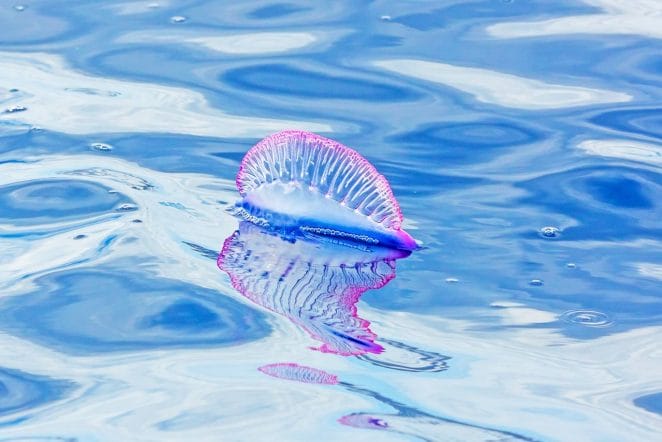
The Portuguese Man O’War is called after an armed sailing ship from the 18th century, as they are said to resemble Portuguese warships when fully sail. Portuguese Man O’Wars are also known as man-of-war, floating terror, or bluebottles due to the purple-blue colour of their pneumatophores.
2: Is a Portuguese man-of-war a jellyfish?
The Portuguese man of war is commonly mistaken for a jellyfish, but it is actually a siphonophore, colonial animals made up of separate specialised organisms known as zooids that function together as a unit, despite their identical appearance.

They are known as bluebottles in the Pacific Ocean and are typically smaller than their Atlantic counterparts. Pacific and Atlantic men-of-war were once assumed to be separate species, but recent genomic research reveals that there may be numerous species after all.
3: What does the Portuguese Man ‘O War eat?
A carnivorous organism, the Portuguese Man-o-War feeds on small fish, plankton, worms, and crustaceans. The colony does not actively seek food, but instead catches prey as it travels along the water’s surface. Before being devoured by the gastrozooid polyp, prey is grabbed and paralysed in venomous tendrils.
4: Does the Portuguese Man O’Wars have predators?
Sea slugs, loggerhead sea turtles, crabs, fish, and the violet sea-snail are all predators of the Portuguese Man-o-War. The Pacific sand crab is a predator of the Portuguese Man-of-War, dragging it to shore and sharing its meal with other crabs.

The violet sea-snail floats near the water’s surface on a bubble raft in the hopes of catching a man-of-war meal. For camouflage, these snails have dark purple undersides and lighter purple tops. Because they float upside down, the darker purple faces up, which helps them blend into the darker water below. When viewed from below, their lighter hues merge with the light coming from above.
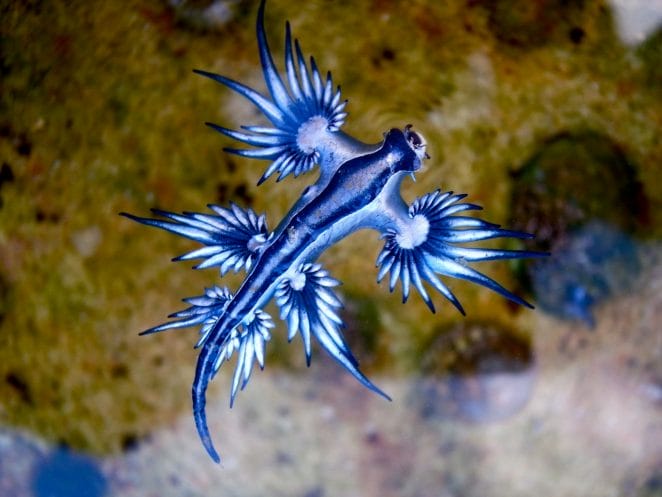
Sea slugs in the genus Glaucus consume men-of-war and adopt a similar coloration and floating-upside-down technique, but they go one step further. Glaucus repurpose the venomous cells of their prey for their own protection. Touching a Glaucus is equivalent to touching a man-of-war.
5: Is a Blue Bottle the same as a Portuguese man-of-war?
Bluebottles are similar in look and behaviour to the Portuguese Man of War (Physalia physalis), although they are smaller and less venomous. Bluebottle stings, unlike the Portuguese Man o’ War, have yet to result in human deaths.
6: Are Man-of-War jellyfish poisonous?
The tentacles have stinging nematocysts, which are tiny capsules with coiled, barbed tubes that release venom that can kill or paralyse small fish and crustaceans. The man o’ war’s sting is rarely fatal to humans, but it is painful and causes welts on exposed skin.
7: What do you do if you get stung by a Portuguese man-of-war?
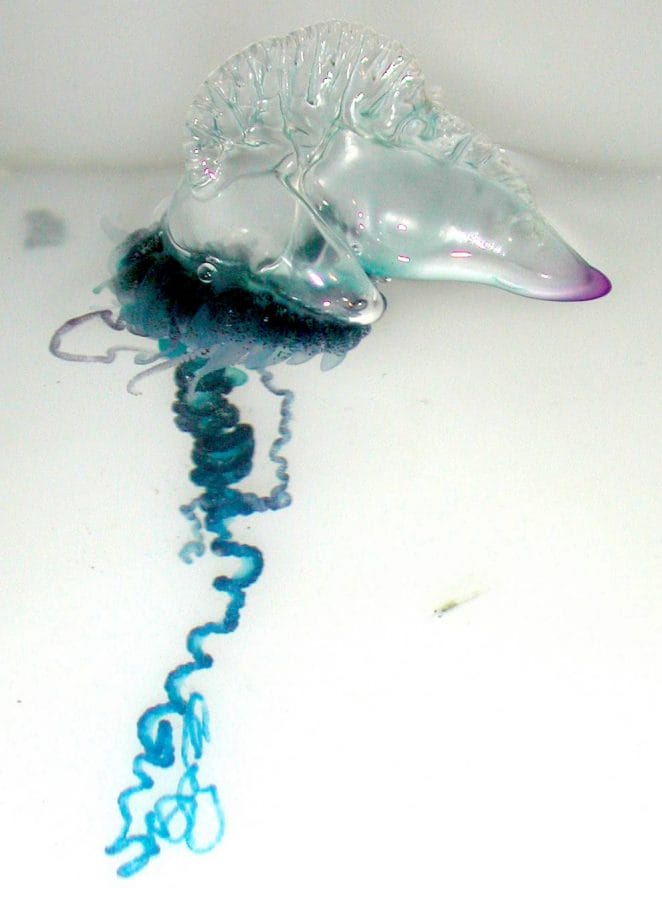
If you’ve been stung, use saltwater to rinse the area. If available, use a concentrated vinegar solution. This will deactivate the stingers and prevent further toxin release. Then try to remove the tentacles with a gloved hand. For around 20 minutes, soak the afflicted area in hot saltwater. Severe reactions necessitate hospitalisation.
8: What’s the difference between a jellyfish and a man-of-war?
Siphonophores, like jellyfish, are predators that catch animals with stinging cells on their tentacles. However, each jellyfish is a single animal, whereas each siphonophore, including the Portuguese Man of War, is a colony of animals that can’t exist without each other.
9: How long do Portuguese Man O’ War live?
The rate of the life cycle, like that of jellyfish and other Cnidarians, is affected by water temperature and other factors. The man-of-war is anticipated to live for at least one year.
10: Does peeing on Man O’ War sting help?
No. Despite popular belief, the practise of peeing on a jellyfish sting to relieve pain is a fiction. Not only are there no studies to back this up, but pee may actually make the sting worse. While urine contains urea and ammonia, which are useful in curing stings, it also contains a lot of water, which dilutes the chemicals’ effectiveness.
11: How long do Man O’ War stings last?
Stings from Portuguese man-of-war produce a red line with little white sores. Blisters and welts that resemble a string of beads may emerge in severe cases. Itchy skin rashes may emerge 1 to 4 weeks after the stung, and the welts may continue for 1 to 2 weeks.
12: How big can a man of war get?
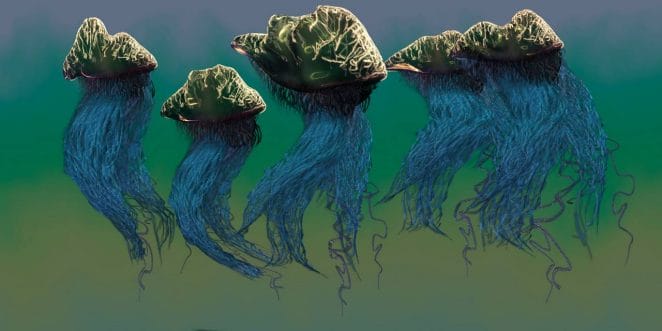
The tentacles of a man-of-war are usually roughly 30 feet long, but they can stretch up to 165 feet (50m).
13: Is the Portuguese Man-of-War endangered?
At present moment, the Portuguese Man-o-War is not classified an endangered species. Although the precise number is unclear, the species has a wide range that is projected to expand with global warming.
14: What are some additional fascinating facts about the Portuguese Man of War?
- Most siphonophores have gaseous floats that are similar to the concentrations present in our atmosphere’s air. Man-of-war floats have similar ratios of these gases, but with a higher percentage of carbon monoxide. The man-of-war, according to scientists, fills its float with carbon monoxide before gradually replacing it with air.
- Even if the colony has died, the tentacles can still sting. A man-of-sting war’s is a reflex that does not require the siphonophore to take any activity. A tentacle that has been severed and is floating in the ocean or washed up on the shore might still sting. The stinging cells can be inactivated with a vinegar washing, and the venom can be neutralised with heat treatment.
- Each Portuguese man o’ war is either male or female, and they reproduce sexually through a process known as broadcast spawning. Females and males discharge their eggs and sperm into the water at the same time in large groups of individuals. This approach enhances the chances of eggs being fertilised.
- The Portuguese man of war is incapable of swimming. Instead, it is propelled forward by wind and ocean currents. Each Portuguese Man-of-War colony’s float will curve slightly to the left or right. As a result, the wind will push colonies in different directions, spreading them out farther.
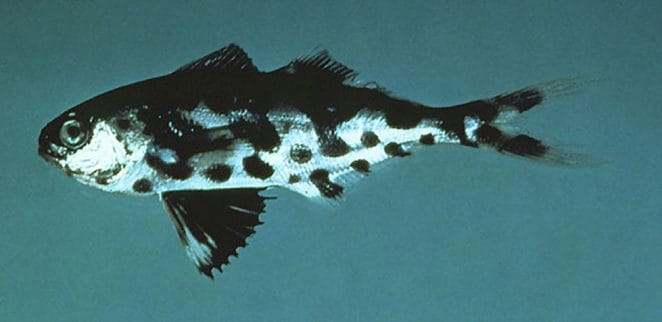
- The Man-o-War fish (Nomeus gronovii) is a little fish noted for its ability to dwell within Man-o-War colonies’ lethal tentacles. The stinging tentacles in which this unusual fish lives have little effect on it. Unlike some creatures that rely on immunity or physical protection from their poisonous tenants — such as clownfish, which have mucus to protect them from sea anemones — these young fish appear to rely primarily on sheer agility to avoid the nematocysts. The fish nibbles the Man-o-tentacles War’s as well as the scraps left over after its meals.
Sources:wikipedia, Florida Museum





GIPHY App Key not set. Please check settings